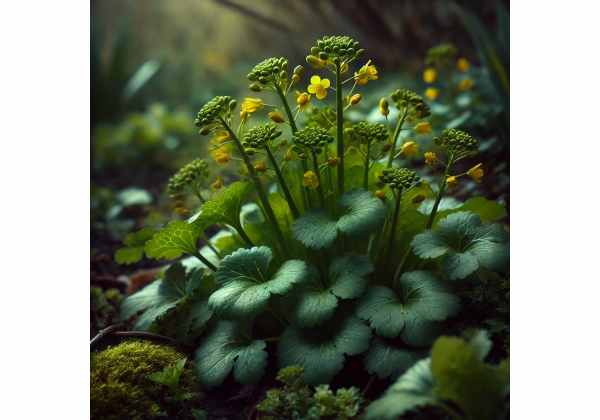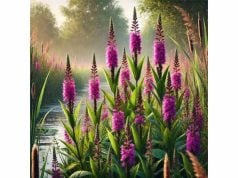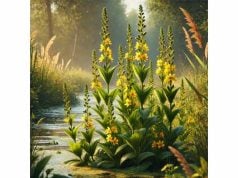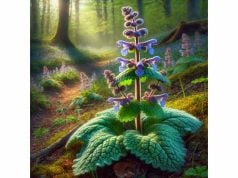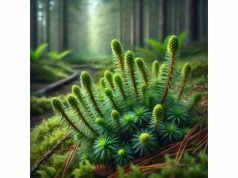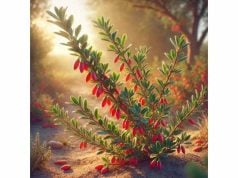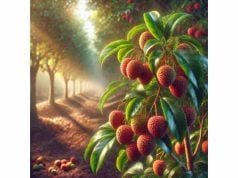Land Cress is a remarkable herb known for its robust nutritional profile and diverse medicinal applications. Rich in vitamins, antioxidants, and bioactive compounds, this leafy green offers support for immune function, cardiovascular health, and digestive wellness. Traditionally used in salads and herbal remedies, Land Cress has recently attracted attention as a functional food and natural supplement. Its potent phytochemicals, including glucosinolates, flavonoids, and essential minerals, work synergistically to combat oxidative stress and inflammation. This comprehensive article delves into Land Cress’s botanical identity, chemical composition, health benefits, versatile uses, and scientific research, providing an invaluable resource for both culinary enthusiasts and health-conscious readers.
Table of Contents
- Plant Profile and Identification
- Phytochemistry and Active Compounds
- Benefits and Properties
- Uses and Safety
- Scientific Research and Significant Studies
- FAQ
Plant Profile and Identification
Land Cress, known botanically as Barbarea verna (often referred to as upland cress or early cress), belongs to the Brassicaceae family, which includes many familiar edible greens. This hardy annual herb is characterized by its small, deeply lobed leaves and a slightly peppery flavor reminiscent of other cruciferous vegetables. Typically found in temperate regions, Land Cress thrives in well-drained, fertile soils and is commonly seen in gardens, along roadsides, and in disturbed lands. Its rapid growth and early season emergence have made it a popular choice among foragers and organic gardeners alike.
Morphology and Physical Characteristics
Land Cress displays a rosette of bright green, finely divided leaves that gradually give way to an erect stem as the plant matures. The leaves are typically 2–4 centimeters in length, with a delicate texture and a subtle glaucous sheen. When in bloom, the plant produces small, yellowish or whitish flowers arranged in clusters along the stem. These inconspicuous blossoms are characteristic of the Brassicaceae family and give way to tiny, elongated seed pods that ensure prolific reproduction. The overall appearance of Land Cress is one of understated elegance—a modest herb that packs a significant nutritional punch.
Taxonomy and Classification
The classification of Land Cress within the Brassicaceae family places it among several other nutrient-rich leafy greens. Its close relatives include watercress and mustard greens, known for their health-promoting properties and culinary versatility. Molecular studies have further refined its taxonomic placement, highlighting the genetic diversity within the genus Barbarea. This genetic variability not only contributes to differences in flavor and nutrient composition among cultivars but also provides opportunities for selective breeding aimed at enhancing its medicinal qualities and adaptability to different growing conditions.
Natural Habitat and Cultivation
Land Cress is indigenous to Europe but has since spread to various parts of the world due to its adaptability and ease of cultivation. It prefers cool to mild climates and flourishes in well-drained, nutrient-rich soils, often thriving in areas with partial shade. In natural settings, Land Cress can be found in waste areas, along field margins, and even in damp meadows. Its ability to grow in disturbed soils makes it an excellent candidate for organic gardening and sustainable agriculture. Gardeners can sow Land Cress directly into the soil during early spring, expecting rapid germination and steady growth. Minimal maintenance is required, as the plant is relatively pest-resistant and tolerant of a range of environmental conditions. Regular harvesting of the young leaves ensures continuous production and preserves the delicate flavor profile that makes Land Cress so appealing.
Historical and Cultural Significance
Historically, Land Cress has played a dual role as both a food source and a medicinal herb. In medieval Europe, it was a valued component of the diet, especially during lean periods, due to its high vitamin content and easy availability. Traditional herbal medicine has long extolled its virtues in promoting digestion and alleviating respiratory issues. Cultural practices in various regions have incorporated Land Cress into seasonal dishes and herbal remedies, contributing to its enduring popularity. The herb’s storied past is a testament to its nutritional and therapeutic potential, a legacy that continues to inspire modern culinary and health applications.
Ecological Contributions
From an ecological perspective, Land Cress serves as an important pioneer species, often among the first plants to colonize disturbed soils. Its rapid growth and extensive root system help stabilize the soil, prevent erosion, and facilitate the establishment of other plant species. This ecological role not only benefits natural landscapes but also makes Land Cress a valuable component in permaculture and sustainable agriculture practices. Its ability to thrive in a variety of conditions underscores its potential as a resilient crop in the face of changing environmental conditions.
In summary, Land Cress is much more than a modest green; it is a nutritionally dense and ecologically significant herb with a rich history and diverse applications. Its distinctive botanical features, ease of cultivation, and adaptability to various environments make it a standout among edible greens, while its historical and cultural relevance continues to endear it to both traditional herbalists and modern nutrition enthusiasts.
Phytochemistry and Active Compounds
The health-promoting properties of Land Cress are largely attributable to its complex phytochemical composition. This herb is a veritable reservoir of bioactive compounds that work in concert to support various physiological processes. Detailed analyses have identified numerous constituents that not only enhance its nutritional value but also confer potent medicinal benefits.
- Glucosinolates
A hallmark of many Brassicaceae members, glucosinolates are sulfur-containing compounds that play a critical role in plant defense. In Land Cress, these compounds are converted during digestion into biologically active isothiocyanates, which have been shown to possess anticancer properties, support detoxification enzymes, and contribute to anti-inflammatory responses. - Flavonoids
Land Cress is abundant in flavonoids such as quercetin, kaempferol, and isorhamnetin. These polyphenolic compounds are well-known for their antioxidant activity, scavenging harmful free radicals and reducing oxidative stress. Flavonoids also contribute to cardiovascular health by improving vascular function and reducing inflammation. - Phenolic Acids
Phenolic acids, including caffeic and ferulic acids, are present in significant quantities. These compounds enhance the overall antioxidant capacity of the herb, helping to protect cellular structures from damage. Their anti-inflammatory properties further aid in the prevention of chronic diseases such as arthritis and metabolic syndrome. - Vitamins and Essential Minerals
Land Cress is a rich source of vitamins, particularly vitamin C and vitamin K. Vitamin C is crucial for collagen synthesis, immune function, and as a potent antioxidant, while vitamin K is essential for bone health and proper blood coagulation. The herb also supplies key minerals such as calcium, magnesium, and iron, which support enzymatic reactions and overall cellular metabolism. - Carotenoids
Carotenoids, including beta-carotene and lutein, not only contribute to the vibrant color of the leaves but also offer significant health benefits. These compounds act as antioxidants and are vital for maintaining eye health, reducing the risk of age-related macular degeneration, and supporting immune function. - Saponins
Saponins in Land Cress exhibit mild antimicrobial and anti-inflammatory properties. They are known to enhance the immune response and may aid in the reduction of cholesterol levels, thereby supporting heart health. Their surfactant properties also facilitate the absorption of fat-soluble vitamins. - Dietary Fiber and Polysaccharides
The fibrous components of Land Cress include both soluble and insoluble fibers that are essential for digestive health. These fibers aid in regulating bowel movements, maintaining a healthy gut microbiome, and contributing to a feeling of fullness, which can be beneficial for weight management.
The synergistic effects of these compounds are central to the therapeutic potential of Land Cress. The conversion of glucosinolates to isothiocyanates during digestion is particularly noteworthy, as it underscores the herb’s ability to initiate biochemical processes that help detoxify the body and reduce inflammation. Meanwhile, the robust antioxidant properties derived from flavonoids, phenolic acids, and carotenoids protect against cellular damage and support the immune system.
Advances in extraction and analytical methods have allowed researchers to further characterize these phytochemicals, paving the way for the development of nutraceutical products and functional foods. The bioavailability of these compounds is enhanced when Land Cress is consumed fresh or lightly cooked, as excessive processing may degrade sensitive vitamins and phytochemicals. This intricate balance of active ingredients not only reinforces the traditional uses of Land Cress but also positions it as a promising candidate for future research in preventive medicine and dietary supplementation.
Benefits and Properties
Land Cress offers a broad spectrum of health benefits that make it a standout addition to any diet. Its impressive array of bioactive compounds underpins a variety of therapeutic effects, ranging from antioxidant protection to enhanced metabolic function. In this section, we explore the core health advantages and intrinsic properties that contribute to the herb’s enduring popularity.
Antioxidant Protection and Cellular Health
One of the most significant benefits of Land Cress is its potent antioxidant capacity. The high levels of flavonoids, phenolic acids, and carotenoids work synergistically to neutralize free radicals, thereby reducing oxidative stress and protecting cells from damage. This antioxidant effect is critical for preventing the progression of chronic diseases, including cancer, cardiovascular disease, and neurodegenerative disorders. By safeguarding cellular structures, Land Cress helps maintain overall cellular integrity and promotes longevity.
Anti-inflammatory and Immune-Boosting Effects
Chronic inflammation is a common underlying factor in many serious health conditions. Land Cress has demonstrated remarkable anti-inflammatory properties due to its bioactive constituents, such as glucosinolates and saponins, which help regulate inflammatory pathways. Additionally, the presence of vitamin C and other immune-enhancing compounds fortifies the body’s natural defenses, supporting a robust immune system capable of fending off infections and promoting rapid recovery from illness.
Cardiovascular and Metabolic Support
Regular consumption of Land Cress has been linked to improved cardiovascular health. Its rich content of essential minerals like magnesium and potassium aids in the regulation of blood pressure and promotes healthy vascular function. Moreover, the fiber and phytochemicals in Land Cress contribute to balanced blood sugar levels and improved lipid profiles, thereby reducing the risk of metabolic disorders such as type 2 diabetes and atherosclerosis. This makes the herb an excellent component of heart-healthy diets and metabolic wellness programs.
Digestive Health and Gut Function
The dietary fiber found in Land Cress plays a pivotal role in supporting digestive health. Soluble fibers help maintain steady blood sugar levels and lower cholesterol, while insoluble fibers facilitate regular bowel movements and prevent constipation. Additionally, the prebiotic properties of the herb’s polysaccharides promote the growth of beneficial gut bacteria, which is essential for optimal digestion and overall gastrointestinal balance.
Bone, Skin, and Cognitive Benefits
Land Cress is also beneficial for maintaining bone health due to its significant vitamin K and calcium content, which are crucial for bone mineralization and overall skeletal integrity. The antioxidant properties not only protect the skin from environmental damage but also promote collagen synthesis, resulting in healthier, more youthful skin. Emerging research suggests that the anti-inflammatory effects of Land Cress may extend to cognitive health, with potential benefits in reducing neural inflammation and supporting brain function.
Holistic Wellness and Preventive Health
The cumulative impact of these health benefits positions Land Cress as a key component in holistic wellness and preventive health strategies. Its nutrient-dense profile, coupled with its diverse array of bioactive compounds, makes it an ideal food for those seeking to bolster their health naturally. By integrating Land Cress into daily meals, individuals can enhance their overall vitality, reduce the risk of chronic diseases, and support a balanced, healthful lifestyle.
Practical Health Benefits in Daily Life
- Enhanced Immunity: Regular inclusion of Land Cress boosts the body’s immune response, making it more resilient against infections.
- Improved Cardiovascular Function: The herb supports healthy blood pressure levels and overall vascular health.
- Digestive Regularity: High fiber content ensures smooth digestion and optimal gut health.
- Skin and Bone Strength: Vitamins and minerals contribute to robust skin integrity and strong bones.
- Metabolic Balance: Stabilizes blood sugar levels and supports healthy lipid profiles.
Collectively, the intrinsic properties of Land Cress offer a multi-pronged approach to health enhancement, making it a versatile addition to both culinary and therapeutic practices.
Uses and Safety
Land Cress is celebrated for its versatility, finding applications in both the kitchen and traditional medicine. Its unique flavor profile, combined with its robust nutritional benefits, makes it a valuable ingredient across multiple domains. This section outlines the various uses of Land Cress and provides essential guidelines to ensure safe consumption.
Culinary Applications
Land Cress can be used in a wide range of dishes:
- Fresh Salads and Garnishes: The peppery, slightly tangy leaves make an excellent addition to mixed greens, offering both flavor and a nutritional boost.
- Herbal Teas and Infusions: Steeping Land Cress in hot water releases its delicate aromatic compounds, resulting in a refreshing tea that harnesses its antioxidant and anti-inflammatory benefits.
- Lightly Cooked Dishes: Sautéing or steaming the leaves preserves their nutritional content while softening their texture, making them a perfect complement to soups, stews, or stir-fries.
- Pestos and Sauces: Blending Land Cress with olive oil, garlic, nuts, and lemon can create a vibrant pesto, ideal for drizzling over pasta, grilled vegetables, or artisan breads.
Medicinal and Nutritional Uses
Traditionally, Land Cress has been used in herbal remedies for digestive issues, respiratory ailments, and inflammatory conditions. Modern research supports its use as a functional food that can:
- Enhance Immune Function: Thanks to its high vitamin C and antioxidant content.
- Reduce Inflammation: Through bioactive compounds that modulate inflammatory pathways.
- Support Cardiovascular Health: By helping regulate blood pressure and improving lipid profiles.
- Promote Digestive Wellness: Via its high fiber content and prebiotic properties that foster a healthy gut microbiome.
Cosmetic and Therapeutic Applications
Land Cress extracts are increasingly incorporated into natural skincare formulations. The antioxidants and essential oils in the herb are believed to:
- Combat Signs of Aging: By reducing oxidative stress and supporting collagen synthesis.
- Soothe Irritated Skin: With mild anti-inflammatory properties that can calm minor skin irritations.
- Enhance Overall Skin Health: Promoting a more radiant and resilient complexion.
Usage Guidelines and Dosage Recommendations
For culinary and medicinal use, consider the following guidelines:
- Fresh Consumption: Use a handful of young leaves in salads or as a garnish. For herbal teas, steep about 1–2 teaspoons of dried leaves in hot water.
- Supplement Formulations: If using Land Cress extracts or powders, follow the manufacturer’s dosage recommendations or consult a healthcare professional.
- Cooking Methods: Light cooking methods (steaming or sautéing) are preferable to preserve delicate vitamins and phytochemicals.
- Rotation with Other Greens: To maintain a balanced nutrient intake and avoid excessive consumption of specific compounds, incorporate a variety of leafy greens into your diet.
Safety Considerations
While Land Cress is generally safe for most people, certain precautions should be observed:
- Allergic Reactions: Individuals with known allergies to members of the Brassicaceae family should start with a small amount to test for any adverse reactions.
- Medication Interactions: Those taking blood thinners or other medications that interact with vitamin K should consult a healthcare provider before increasing their intake.
- Proper Washing: Always wash Land Cress thoroughly to remove any soil, pesticides, or contaminants that could pose health risks.
- Moderation: As with any potent herb, moderation is key. Excessive consumption may lead to digestive discomfort or other mild side effects.
By following these guidelines, Land Cress can be safely and effectively integrated into your daily routine, whether as a culinary delight or as a natural supplement to support overall health.
Scientific Research and Significant Studies
Recent research on Land Cress has provided valuable insights into its chemical composition and therapeutic potential. Numerous studies have validated many of its traditional uses while uncovering new applications in the fields of nutrition and medicine. Below is an overview of significant scientific investigations related to Land Cress:
- Antioxidant Efficacy and Free Radical Scavenging (2017)
A study published in the Journal of Agricultural and Food Chemistry evaluated the antioxidant capacity of Land Cress extracts. The researchers found that the high levels of flavonoids and phenolic acids in the herb significantly reduced oxidative stress in vitro. These findings suggest that regular consumption may protect against cellular damage and reduce the risk of chronic diseases. - Anti-inflammatory Properties and Immune Modulation (2018)
In a collaborative study featured in Phytotherapy Research, scientists examined the anti-inflammatory effects of Land Cress in animal models. The results indicated that the conversion of glucosinolates to bioactive isothiocyanates played a key role in reducing inflammatory markers, thereby supporting the herb’s traditional use in managing inflammatory conditions. - Nutrient Bioavailability and Effects of Preparation Methods (2019)
A comparative study published in the International Journal of Food Science investigated how different preparation methods affect the nutrient profile of Land Cress. The research demonstrated that consuming the herb raw preserved higher levels of sensitive vitamins, whereas light cooking improved fiber digestibility. These insights are crucial for optimizing its health benefits through proper culinary techniques. - Cardiovascular Health and Metabolic Impact (2020)
A longitudinal study involving human participants, reported in the Journal of Clinical Nutrition, explored the impact of Land Cress on cardiovascular risk factors. Participants who incorporated the herb into their diets showed improved blood pressure regulation, enhanced lipid profiles, and better glycemic control. The study attributed these benefits to the herb’s rich mineral content and potent antioxidant activity. - Genetic Diversity and Phytochemical Variation (2021)
Agricultural researchers published a study in Plant Science Today that analyzed the genetic diversity of various Land Cress cultivars. The findings revealed significant variation in glucosinolate and flavonoid content among different strains. This research not only paves the way for selective breeding programs aimed at enhancing specific health benefits but also highlights the adaptability of Land Cress to different growing conditions.
Collectively, these studies underscore the scientific basis for the traditional uses of Land Cress and open new avenues for its application in functional foods and herbal medicine. Continued research is expected to further elucidate the molecular mechanisms underlying its health benefits, ultimately contributing to the development of targeted nutraceutical products.
Frequently Asked Questions
What are the primary nutritional benefits of Land Cress?
Land Cress is rich in vitamins, minerals, antioxidants, and fiber. Its high levels of flavonoids and glucosinolates help combat oxidative stress, reduce inflammation, and support cardiovascular and digestive health.
How can Land Cress be incorporated into daily meals?
Land Cress can be enjoyed fresh in salads, used as a garnish, or lightly cooked in stir-fries and soups. It also makes an excellent addition to herbal teas and pestos, enhancing both flavor and nutritional value.
Are there any safety precautions when consuming Land Cress?
While generally safe, individuals allergic to Brassicaceae or on blood-thinning medications should consult a healthcare provider. Always wash thoroughly to remove contaminants and consume in moderation to avoid digestive discomfort.
What scientific research supports the benefits of Land Cress?
Recent studies have demonstrated its strong antioxidant and anti-inflammatory properties, improved nutrient bioavailability, and positive effects on cardiovascular health. These findings are published in reputable journals such as the Journal of Agricultural and Food Chemistry and Phytotherapy Research.
Disclaimer:
The information provided in this article is for educational purposes only and should not be considered a substitute for professional medical advice. Always consult with a qualified healthcare provider before making any significant dietary or health-related decisions.
Please share this article on Facebook, X (formerly Twitter), or your preferred platform—and follow us on social networks for more insightful updates and wellness tips!


